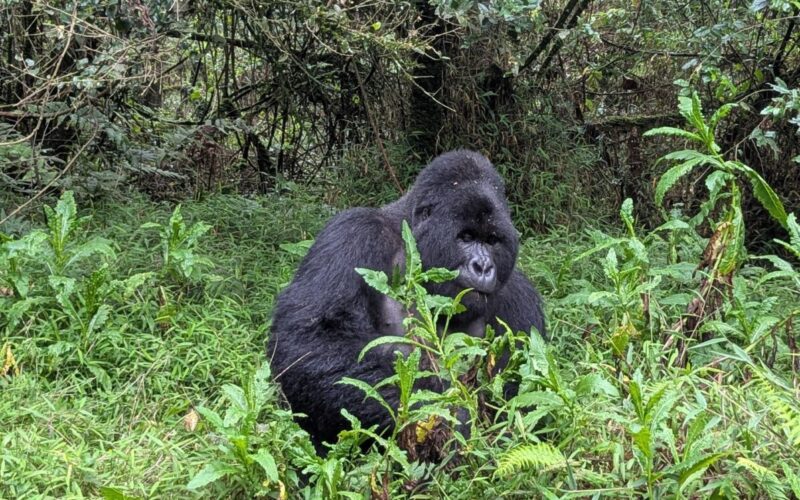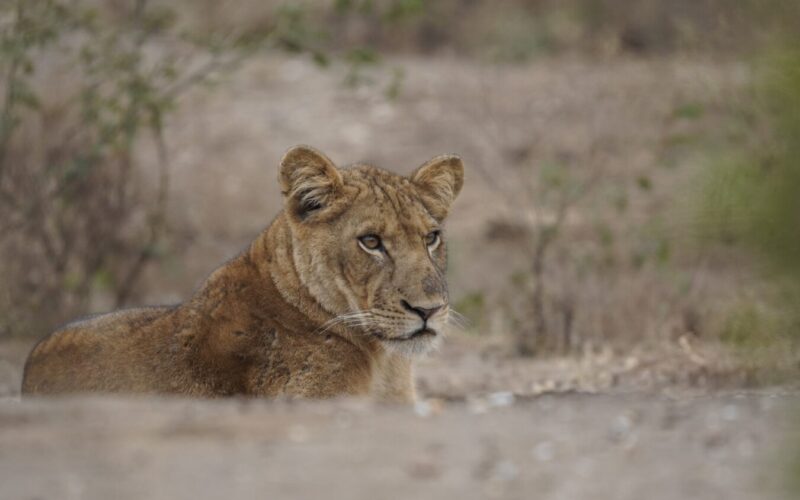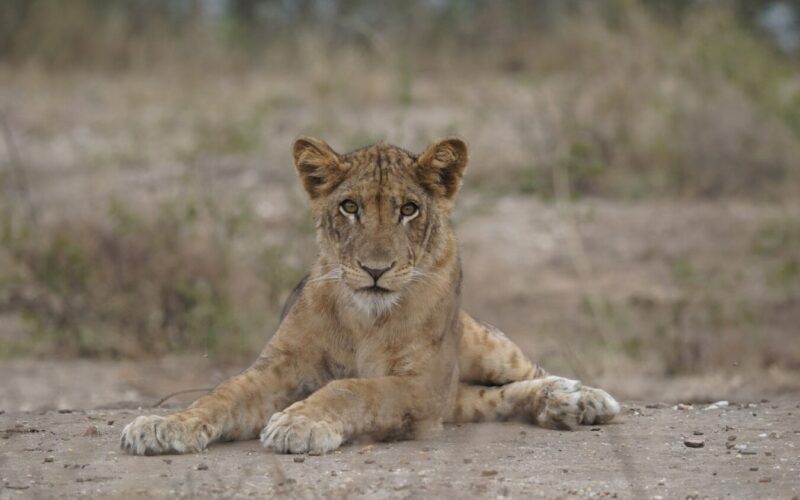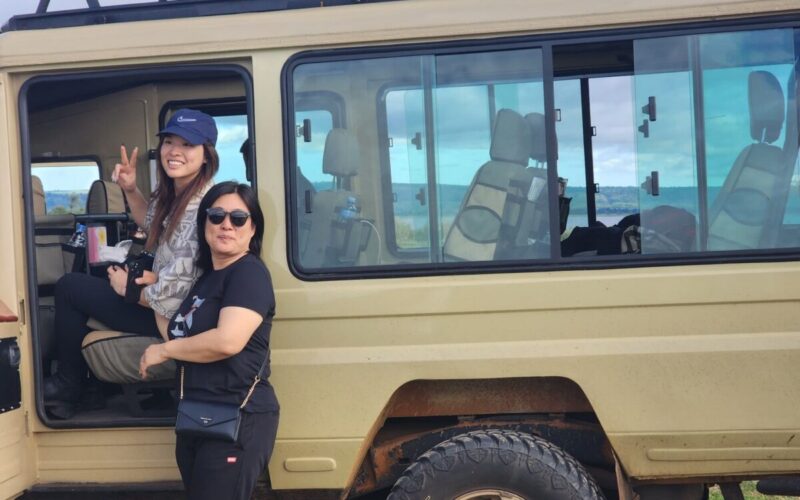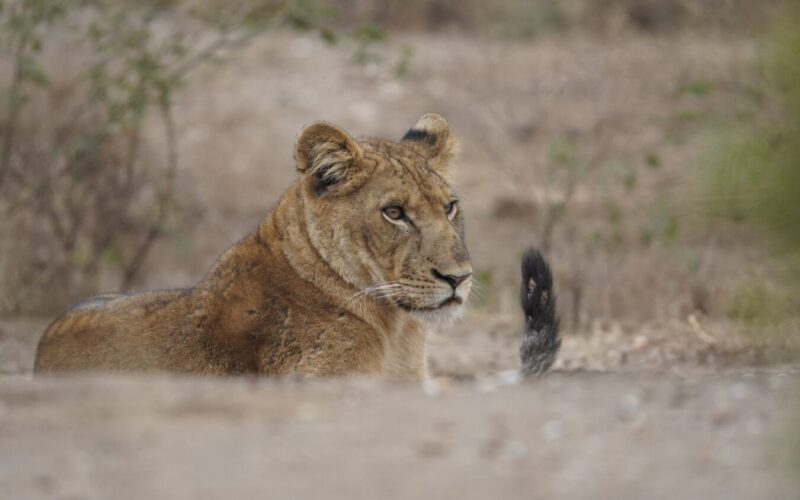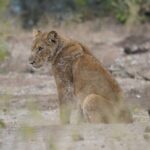
Calving Season Safaris in Serengeti
November 7, 2025
All-Inclusive Tanzania Safari Packages
November 7, 2025Birdwatching Safaris in Tanzania – An Exceptional Tanzania Uganda Safari Experience
Tanzania stands as one of Africa’s premier birdwatching destinations, attracting enthusiasts from across the globe. With nearly 1,100 recorded bird species, the country offers both permanent residents and migratory birds across diverse habitats. From the sweeping plains of the Serengeti to the volcanic caldera of Ngorongoro and the lush wetlands of Lake Manyara, Tanzania offers an unparalleled mix of landscapes for Tanzania Wildlife Safaris and specialized birding adventures. Travelers who combine birdwatching with classic safari experiences often ask: How can one maximize birding opportunities while enjoying iconic wildlife sightings? How do small groups or personalized tours enhance observation of elusive species?
A Tanzania Uganda Safari can blend birdwatching in Tanzania with gorilla trekking in Uganda, creating a comprehensive East African wildlife experience. Birding safaris in Tanzania appeal to both seasoned birders and newcomers, offering specialized itineraries with expert guides, cultural immersion, and off-the-beaten-path exploration. By including both birding hotspots and iconic safari locations, travelers experience the full richness of East Africa’s ecosystems, while also contributing to conservation efforts and supporting local communities around safari lodges.
Serengeti National Park: Bird Diversity Across the Plains
The Serengeti is renowned not only for the Great Migration and predator-prey spectacles but also for its remarkable bird diversity. A Tanzania Wildlife Safari in this region provides opportunities to spot species such as the Kori Bustard, Usambiro Barbet, Grey-breasted Spurfowl, and numerous raptors soaring over the savannah. Early morning game drives are ideal for observing birds actively hunting or foraging, while late afternoons often reveal colorful flocks returning to roost.
Small group safaris enhance birdwatching in the Serengeti by providing flexibility to track elusive species, focus on photography, and navigate less-traveled areas. Around the lodges, travelers can engage with local Maasai communities, learning about traditional beadwork, livestock practices, and storytelling while enjoying meals prepared with locally sourced ingredients. Birdwatching enthusiasts can also participate in conservation-oriented programs, such as monitoring bird populations or protecting nesting sites, creating an ethical and immersive Tanzania Safari and Gorilla Trek experience that combines wildlife observation with cultural and environmental engagement.
Ngorongoro Crater: UNESCO Birding Haven
Ngorongoro Crater, a UNESCO World Heritage site, provides a unique setting for birdwatching due to its high biodiversity and varied habitats. The crater’s wetlands, grasslands, and forests host species such as the Secretary Bird, Kori Bustard, and Greater Flamingo near Lake Magadi. Birding here complements traditional wildlife observation, offering guests a chance to view endemic and migratory species alongside lions, elephants, and rhinos.
Small group tours in Ngorongoro maximize sightings by providing early access and flexible itineraries, often allowing participants to explore the crater rim or nearby highlands. Around lodges, travelers can engage with Maasai guides to understand how communities coexist with wildlife and protect bird habitats. This cultural immersion strengthens a Tanzania Uganda Wildlife Safari, creating meaningful experiences beyond observation. Photographers and naturalists especially benefit from intimate settings, capturing both dramatic wildlife interactions and the subtle behaviors of rare or endangered birds.
Tarangire National Park: Birds of the Drylands
Tarangire National Park offers a distinct birding experience with over 500 recorded species thriving in dry-country ecosystems. Species such as the Yellow-collared Lovebird, Ashy Starling, and Red-and-Yellow Barbet are complemented by large herds of elephants and graceful giraffes, creating a rich and immersive Tanzania Wildlife Safari environment. Early morning drives along Tarangire’s riverbanks reveal active birdlife, while afternoons allow observation of mixed-species flocks and nesting behaviors.
Small group birding safaris in Tarangire also provide opportunities for cultural engagement. Lodges often partner with local communities, allowing travelers to learn traditional crafts, participate in dance or music sessions, and understand sustainable practices in agriculture and wildlife conservation. Combining these experiences with broader itineraries, including the Serengeti or Lake Manyara, creates a comprehensive Tanzania Safari and Gorilla Trekking experience. Guests leave with both unforgettable wildlife memories and meaningful connections to Tanzanian culture.
Lake Manyara National Park: Flamingos and Wetland Wonders
Lake Manyara is a magnet for birdwatchers due to its large flocks of flamingos and over 500 other resident and migratory species. Shorelines, wetlands, and acacia forests create diverse birding habitats, providing opportunities to observe storks, pelicans, and raptors against dramatic lake vistas. Manyara is ideal for travelers seeking short birding excursions as part of a broader Tanzania Safari and Gorilla Safari itinerary.
Small group safaris offer flexibility to explore hidden trails and lesser-visited viewpoints, enhancing bird observation. Cultural experiences around lodges include visits to local villages, guided walks with conservation educators, and participation in community projects that support wetland preservation. By combining wildlife and birdwatching, Lake Manyara serves as both a scenic and educational hub for eco-conscious travelers on a Tanzania Uganda Wildlife Safari or combined safari and gorilla trekking journey.
Ruaha National Park: Southern Birding Adventure
Ruaha National Park, Tanzania’s largest protected area, provides a rugged and remote birding destination. The park hosts species such as the African Finfoot, Red-throated Twinspot, and numerous raptors, set against the backdrop of the Great Ruaha River and sprawling savannah. Birding in Ruaha combines with predator sightings, large elephant herds, and seasonal wildebeest migrations, creating a complete Tanzania Wildlife Safari experience for both casual observers and dedicated birders.
Lodges and camps in Ruaha often collaborate with local communities, offering cultural experiences such as Maasai village visits, traditional cooking sessions, and participatory conservation projects. Small group formats ensure personalized attention, guiding participants to the best birding spots while minimizing environmental impact. Travelers seeking an exclusive off-the-beaten-path experience find Ruaha to be a perfect destination for combining wildlife observation, photography, and cultural immersion on a Tanzania Safari and Gorilla Trek itinerary.
Arusha National Park: Compact Birding Excursions
Arusha National Park, with its compact landscapes and diverse habitats, provides excellent birdwatching opportunities for shorter itineraries. The park hosts numerous species, from African Green Pigeons to Lilac-breasted Rollers, while offering easy access to its scenic mountains, crater lakes, and forests. Birding here complements wildlife observation, allowing travelers to combine photography and species documentation with relaxed safari experiences.
Small group tours ensure flexibility to explore hidden trails and high-elevation viewpoints, enhancing both birding and overall safari enjoyment. Around lodges, visitors can engage with local guides to learn about conservation initiatives, cultural traditions, and sustainable land management. Integrating Arusha into a Tanzania Safari and Gorilla Trekking or Tanzania Uganda Gorilla Safari allows travelers to enjoy accessible birding while preparing for more remote destinations, creating a balanced and educational safari experience.
Types of Birdwatching Safaris in Tanzania
Tanzania offers multiple formats for birdwatching adventures, catering to diverse interests.
- Dedicated Birding Tours: These itineraries, ranging from 4-day to 36-day trips, focus on endemic species, specific ecosystems, or extensive coverage of multiple parks. Travelers target rare and migratory birds, including Eastern Arc Mountains endemics.
- Combined Wildlife and Birding Safaris: Many tours integrate classic wildlife viewing with birdwatching, allowing participants to observe both megafauna and avian diversity across Serengeti, Tarangire, and Ruaha.
- Specialized Endemic Tours: Certain safaris focus on specific habitats or unique species, such as Mahale Mountains for chimpanzees and forest birds, or Udzungwa Mountains for montane endemics.
These options ensure that both novice birdwatchers and expert ornithologists enjoy tailored experiences with maximum sightings and engagement during a Tanzania Uganda Safari or Tanzania Safari and Gorilla Trek.
Tips for Birdwatchers on Safari
To optimize birdwatching, travelers should consider several key factors:
- Expert Guides: Knowledgeable guides increase species identification success and locate elusive birds. Guides also provide educational insights on habitats and conservation challenges.
- Specialized Tours: Dedicated itineraries improve chances of seeing rare or endemic species, especially in off-the-beaten-path locations.
- Equipment Preparation: Binoculars, quality field guides, and camera gear enhance observation, documentation, and overall enjoyment.
- Timing and Seasons: Early mornings and late afternoons offer peak bird activity, while migratory seasons provide spectacular flocking events.
Following these strategies ensures that birdwatchers experience a comprehensive and fulfilling Tanzania Wildlife Safari while supporting responsible tourism practices.
Cultural Experiences Around Birding Lodges
Birdwatching safaris in Tanzania often integrate cultural interactions, providing travelers with a deeper understanding of local life. Near Serengeti and Ngorongoro, guests can engage with Maasai communities, learning traditional dances, beadwork, and livestock practices. In southern parks like Ruaha, local guides provide insight into hunting, farming, and conservation efforts. These interactions support community livelihoods and enhance travelers’ understanding of the interconnectedness between humans, wildlife, and birds.
Including cultural experiences around birding lodges elevates a Tanzania Safari and Gorilla Trekking itinerary, creating a holistic adventure that combines ecological observation, photography, and meaningful cultural engagement.
Why Choose Deks Safaris and Tours for Birdwatching
Deks Safaris and Tours specializes in customized Birdwatching Safaris in Tanzania, providing expert guides, sustainable lodges, and immersive itineraries. Whether travelers focus on the Serengeti, Tarangire, Ruaha, or combine these with Uganda gorilla trekking, the company ensures expert-led experiences, ethical wildlife encounters, and meaningful cultural interactions.
Small group formats, flexible itineraries, and community engagement allow travelers to enjoy Tanzania’s birds while supporting conservation and local economies. Deks Safaris combines experience, expertise, and trustworthiness to offer authentic Tanzania Uganda Wildlife Safari experiences tailored for both birders and general wildlife enthusiasts.
A Birdwatching Adventure Beyond Ordinary Safaris
Birdwatching Safaris in Tanzania offer unique, immersive experiences that combine observation of nearly 1,100 species with iconic wildlife encounters. From the Serengeti plains to Ngorongoro Crater, Tarangire’s drylands, Lake Manyara’s wetlands, and Ruaha’s rugged landscapes, Tanzania provides exceptional diversity for every type of bird enthusiast. Combined with gorilla trekking in Uganda, travelers can enjoy a complete Tanzania Safari and Gorilla Safari, blending iconic wildlife, avian diversity, and cultural experiences.
With Deks Safaris and Tours, each safari is personalized, sustainable, and designed to maximize wildlife observation, cultural immersion, and conservation awareness. This approach ensures travelers leave East Africa inspired, informed, and connected, creating memories that last a lifetime while supporting local communities and ecosystems.

